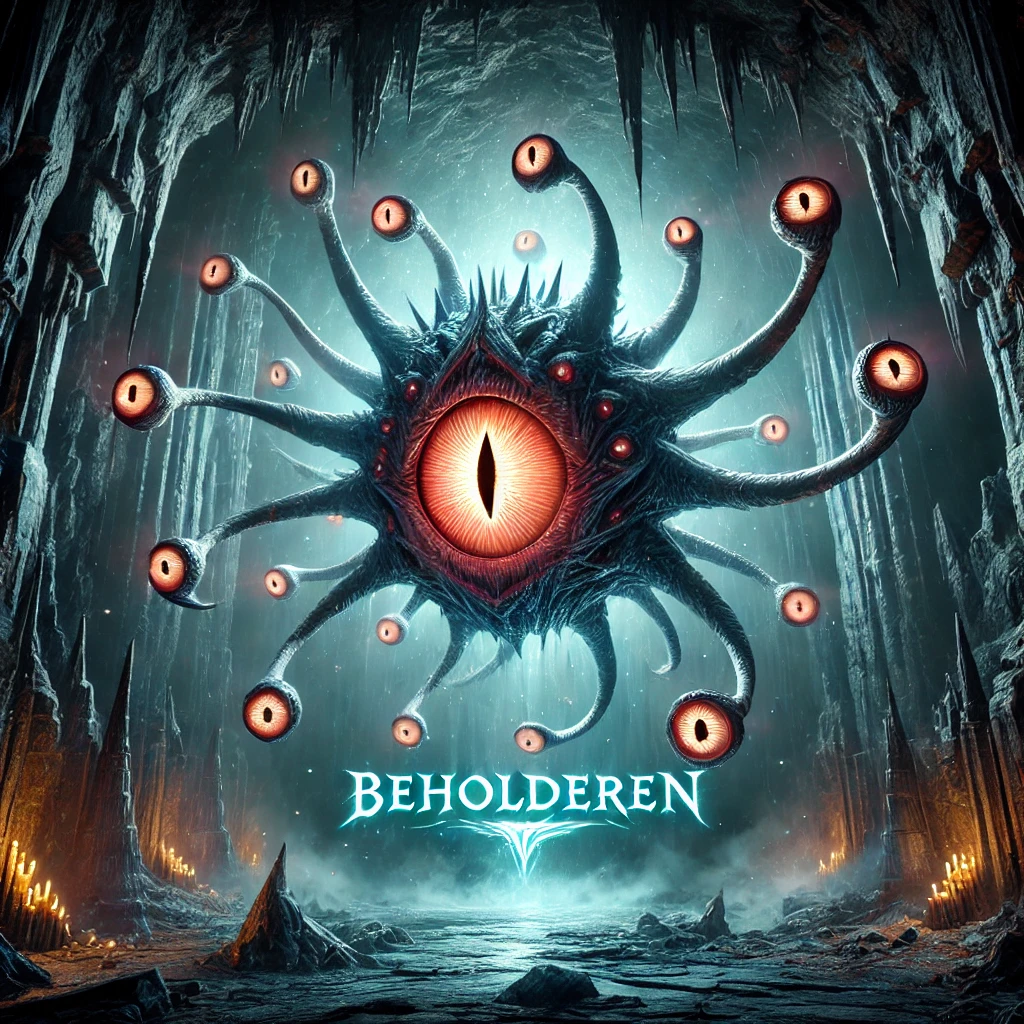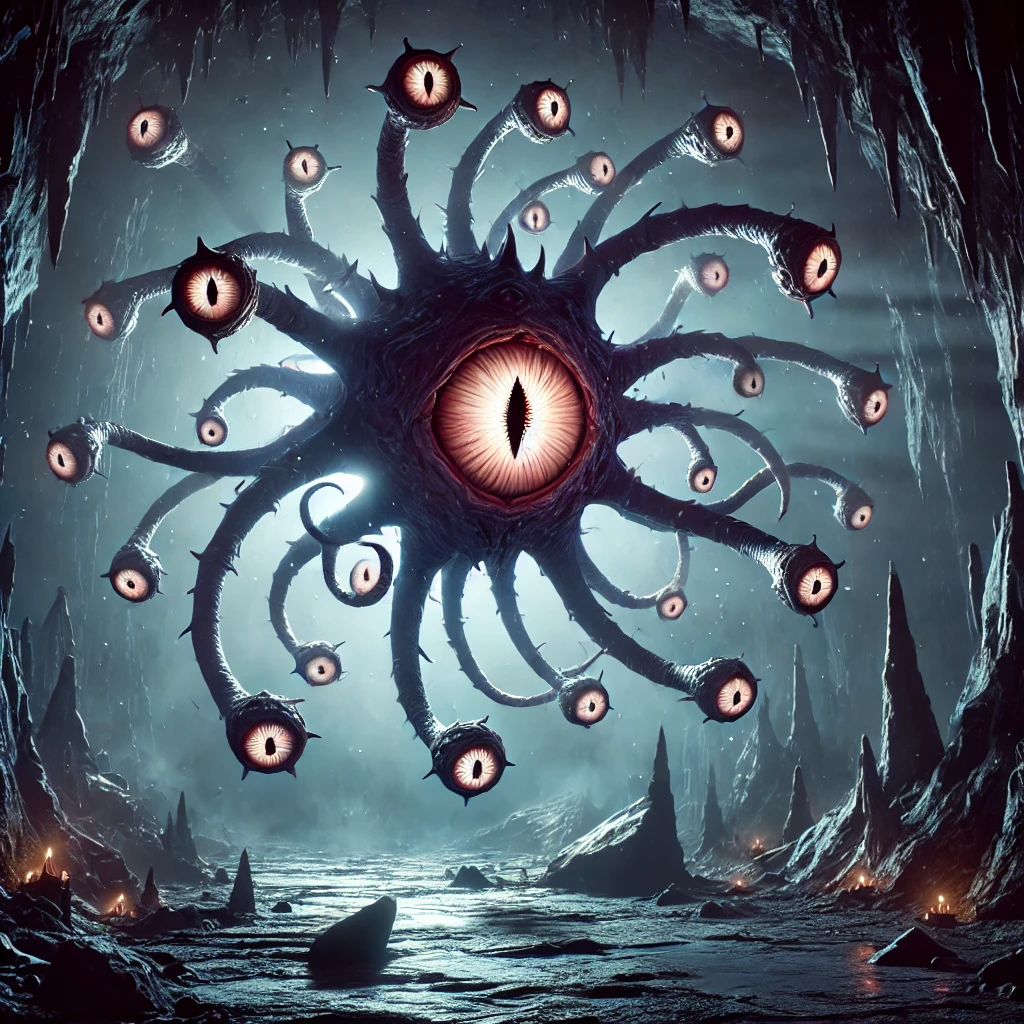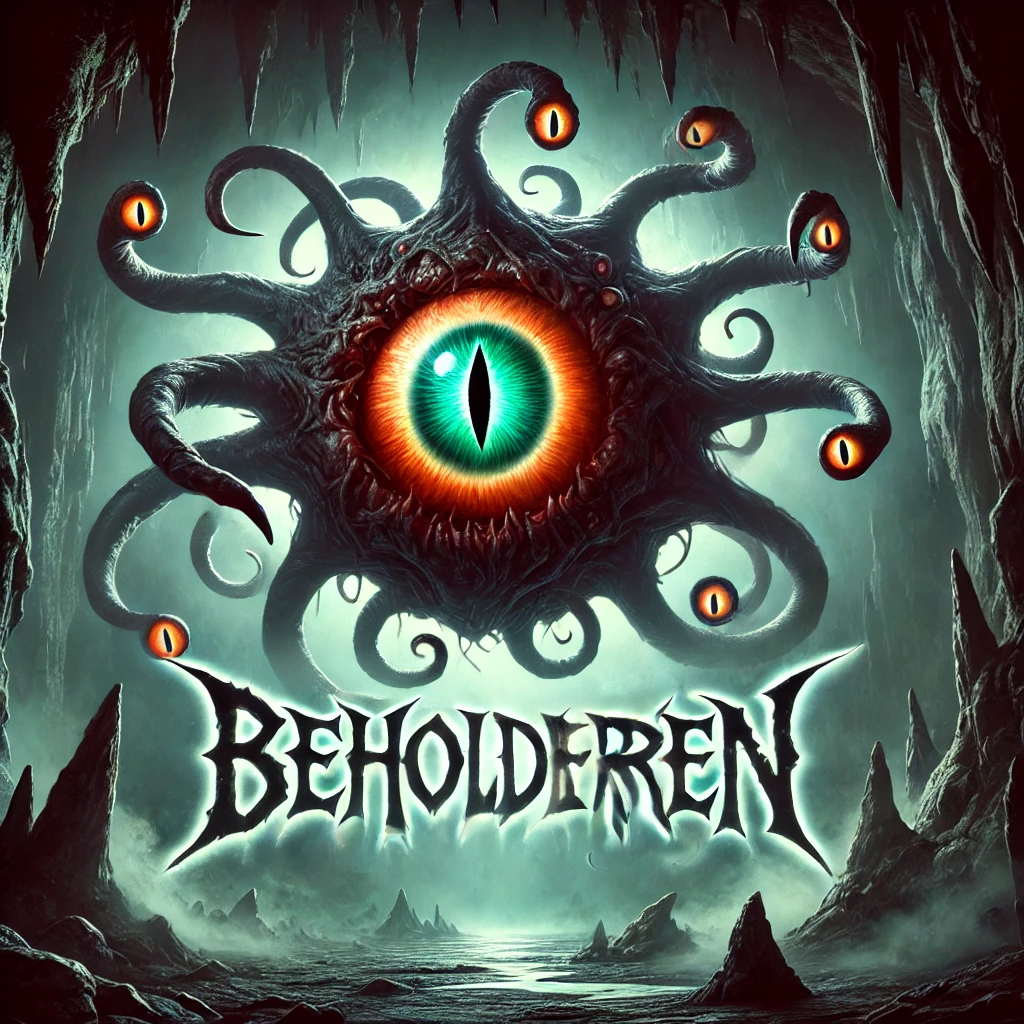
Introduction of beholderen A Masterwork of Fantastical Horror:
Few animals have inspired as much fear and wonder in the wide, fantastical worlds of fantasy literature and role-playing games as the beholderen. The beholder is a key figure in the zoological lists of video games, tabletop role-playing games like Dungeons & Dragons (D&D), and the imaginative storytelling of innumerable fantasy realms. It is an embodiment of dread, cunning, and raw magical strength. Its hideous yet intriguing look makes it a popular antagonist due to its strategic potential as an enemy. This essay examines the history, cultural resonance, diversity, and importance of the beholder in many media, with a special emphasis on D&D.
The Beholder’s Origins:
Dungeons & Dragons introduced the world to the beholderen, as it is known in modern fantasy, in 1975. Terry Kuntz, the game creator, created the creature, which Gary Gygax co-authored, and it was promptly incorporated into the game’s Greyhawk supplement. Since then, the beholder has grown to become one of the D&D universe’s most recognizable monsters.
It appears that the original idea behind the beholder was inspired by both monsters and mythology. The Greek Cyclops, a legendary creature with immense power in a single eye, is probably where the concept of a hovering, multi-eyed creature originated. But the creature known as the beholderen multiplies this idea tenfold because to its distinctive array of eye stalks, each of which is capable of unleashing a unique lethal spell. This creature is the epitome of a “magical horror,” fusing supernatural aspects with an alien, disturbing appearance that subverts the more conventional goblin and dragon enemies found in fantasy settings.

Beholderen
Look and Capabilities:
The beholderen appearance is what stands out the most. Its center body is usually shown as a hovering, orb-like creature with a big, single eye and a gaping mouth full of jagged teeth. Many eye stalks, each ending in a tiny eye, surround its main body. Every one of these stalks has special magical abilities that typically take the form of various rays, ranging from mind control to petrification to disintegration and other negative consequences.
The anti-magic central eye of the beholder is the source of its strength. Within its field of vision, this eye projects a cone of magical weapons, abilities, neutralizing spells, and anti-magic. The beholder is a fierce foe in any battle scenario just by virtue of this ability, especially in the magically complex settings found in most fantasy role-playing games. With the precision and lethality of its eye rays, it can take control of the battlefield and strike several foes at once.
The creature is more than simply a physical threat because of its magical abilities, high intelligence, and paranoid disposition. Being a skilled tactician, it will typically take advantage of its environment by arranging obstacles, troops, and traps to give it the upper hand.
Dungeons & Dragons beholders:
The beholderen in Dungeons & Dragons is a symbol of chaos and peril rather than just a monster that must be vanquished. These animals are frequently shown as extremely intelligent entities with unique lairs, plans, and objectives. Beholders are renowned for being extremely paranoid and for always worrying that someone is out to get them. Since they frequently perceive one another as possible threats, their anxiety even extends to other beholders. Because of this, they are extremely territorial and quick to launch preventative attacks against any perceived threat.
The beholder’s lair is equally dangerous as the creature itself in D&D. Often stocked with traps and defensive spells, these lairs are watched over by subordinate creatures who serve the beholder out of fear or loyalty. Every lair is a reflection of the beholder’s personality, complete with elaborate schemes for defense, dominance, and occasionally a sinister kind of artistic expression.
Within D&D, there are numerous sorts of beholders, each with a distinct twist. Among the instances are:
Death Tyrant: An even more terrible beholder, skeletonized and frequently undead. Another term for beholders that highlights their use of attacks centered around the eyes is Eye Tyrant.
Spectator: A subordinate form of the beholder, frequently called upon to protect valuables or antiquated artifacts. The most formidable of these beings are frequently the architects of intricate, huge plans spanning whole campaigns. A beholder is not just an encounter but also the primary opponent in many D&D adventures. They are crafty, cunning creatures with ambitious schemes that test players’ physical and mental limits.
Cultural Influence and Explanations:
The power of the vision extends beyond the world of D&D. During several decades, it have appeared in a variety of media, such as video games, animated shows, comic books, and novels. Fans of the fantasy genre love it for its frightening abilities and distinctive design.
The beholderen has one of its most prominent appearances outside of D&D in the video game series Baldur’s Gate, where it frequently appears in dark, deep dungeons and poses a serious threat to players. Much of the beholder’s potency from the tabletop version is still present in these games; the centerpieces of its attack pattern are its anti-magic cone and eye stalks.
In fantasy art, the beholder has also gained popularity. It is frequently portrayed in intricate drawings that highlight its macabre beauty. The monster is a remarkable image due to its numerous eyes, floating form, and strange anatomy. numerous painters have used their imaginations to reimagine the beholder for various settings and stories.

Beholderen
The beholderen has occasionally been mentioned or mocked in video games, movies, and television shows. Even to people who may not be familiar with D&D, it is instantly identifiable due to its iconic appearance and strong skills. For instance, a creature resembling a beholder appears as a supporting character in the cartoon series Futurama’s “Bender’s Game” episode, a reference to the show’s D&D roots.
The Beholder’s Psychology:
The psychological depth of the beholderen is among its most intriguing features. The beholderen in contrast to a lot of monsters in fantasy games, is not motivated by racial or violent impulses. Rather, it is a creature whose intelligence, control-obsession, and paranoia define it. These animals frequently believe that they are ideal beings that are superior to all other living things. since of this superiority complex, the beholder is inherently suspicious of everything that is less than them since they perceive it as a possible threat to their position of supremacy.
One important aspect of beholderen interactions with their environment is their paranoia. They rule their realm with an iron hand and are frequently seen in remote areas. They take great care in creating their lairs to keep out intruders, and they are ready to face betrayal from other beholders, their minions, or even adventurers. The beholder is a formidable opponent because of its perpetual awareness, which keeps it many steps ahead of anyone attempting to destroy it.
Fantasy’s Thematic Significance:
In many fantasy stories, the beholderen is a theme emblem of unbridled ambition and the perils of isolationism. Its tremendous might, along with its distrust of people and paranoia, makes it a cautionary story about the perils of having too much control and the dread of losing it. Real-world anxieties about vulnerability and imperfection are mirrored in the beholder’s wish to stay flawless and untouchable.
The beholderen might be interpreted as a sort of metaphor for despotic monarchs or rulers who, in their attempt to hang onto all power, end up as prisoners of their own authority. Their inability to stop looking out for dangers, imagined or real, drives them to solitude and, eventually, failure. This issue is prevalent in political and social commentary as well as fantasy literature, as the fear of losing power can result in harmful actions.
Beholder Variations in Other Fantasy Environments:
Though the beholderen is most intimately linked to Dungeons & Dragons, similar creatures, each with its own unique take on the idea of a many-eyed, magical terror, have been seen in other fantasy settings.
For instance, in the Warhammer setting, the Lords of Change and other daemons of the Chaos God Tzeentch have certain thematic parallels with the beholderen. Similar to the beholder in D&D, these creatures, despite having different appearances, represent the concepts of magic, manipulation, and paranoia. They are also strong sorcerers who can change reality to suit their needs. However, they are frequently represented as cunning plotters who are constantly trying to increase their power.
The beholderen-like creatures have made appearances as bosses or formidable foes in video game titles such as Final Fantasy and The Elder Scrolls outside of Baldur’s Gate. These versions may have different forms and purposes, but they still have the same basic characteristics—that is, they are strong, magical beings with many eyes and terrible skills.
In summary:
The observer is one of the most recognized and enduring characters in fantasy literature because of its extraordinary abilities, peculiar appearance, and deep psychological complexity. The beholderen has always terrified and captivated audiences, whether it is played in Dungeons & Dragons or appears in other media. It is more than just a monster thanks to its unique combination of magical ability, cunning, and paranoia; it is a formidable foe that presents gamers and readers with numerous obstacles.
Read More Articles related to my website: Insights on the power of Joyous laughter NYT
